Romain Attanasio 14th in the Vendée Globe
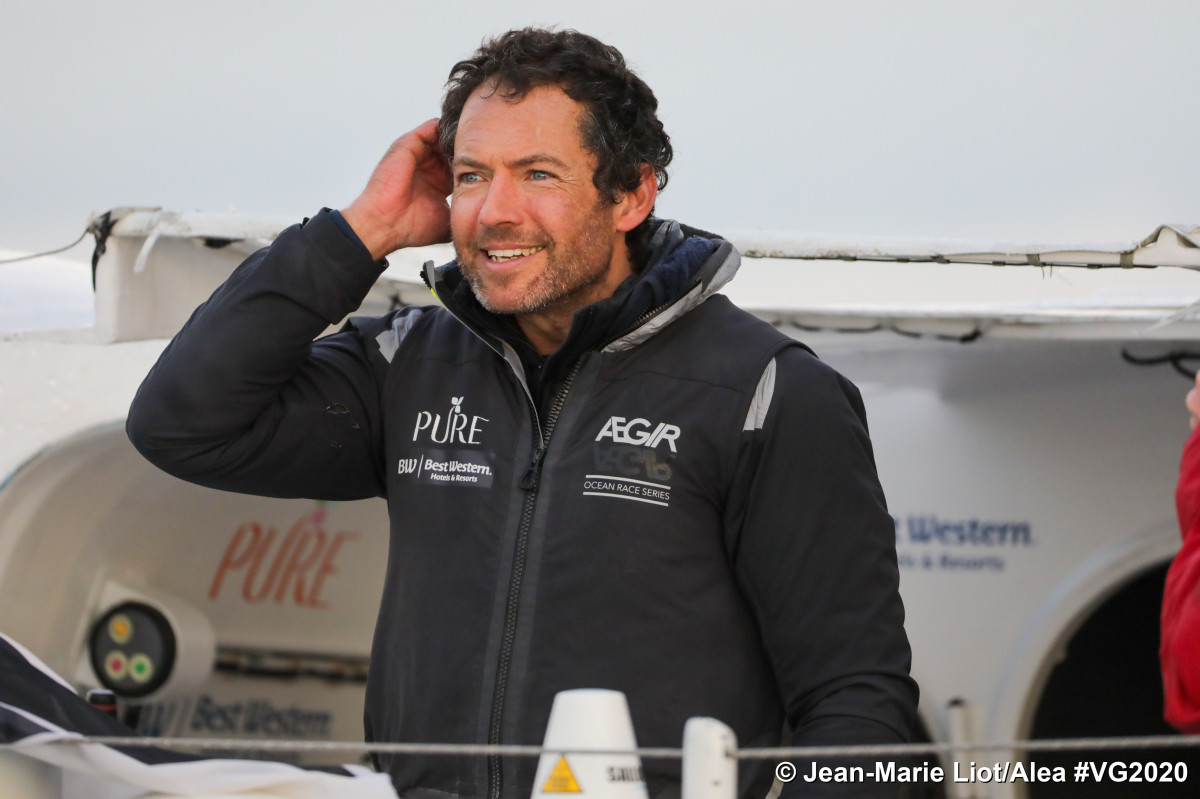
This Saturday 6 February at 16 hours, 06 minutes and 02 seconds UTC French skipper Romain Attanasio crossed the finish line of the ninth edition of the Vendée Globe to take 14th place.
His elapsed time is 90 days, 02 hours, 46 minutes and 02 seconds.
To a great extent 43 year old Attanasio has achieved what he set out to do, completing his second Vendée Globe without major problems and proving himself competitive in the top half of the fleet on a modest budget. As ever Attanasio, whose life partner is Sam Davies has shared his race with enthusiasm and down to earth passion, visibly enjoying and profiting from the tough moments as well as the straightforward racing.
His first Vendée Globe finished up four years ago with a much more distant 15th place in 109 days and 22 hours, more than 35 days after race winner Armel Le Cléac’h. A rudder replacement at Port Elizabeth by Cape Town saw him lose touch the main body of the fleet and Attanasio sailed much of his first race in isolation other than in the latter stages when he had a good race with Didac Costa.
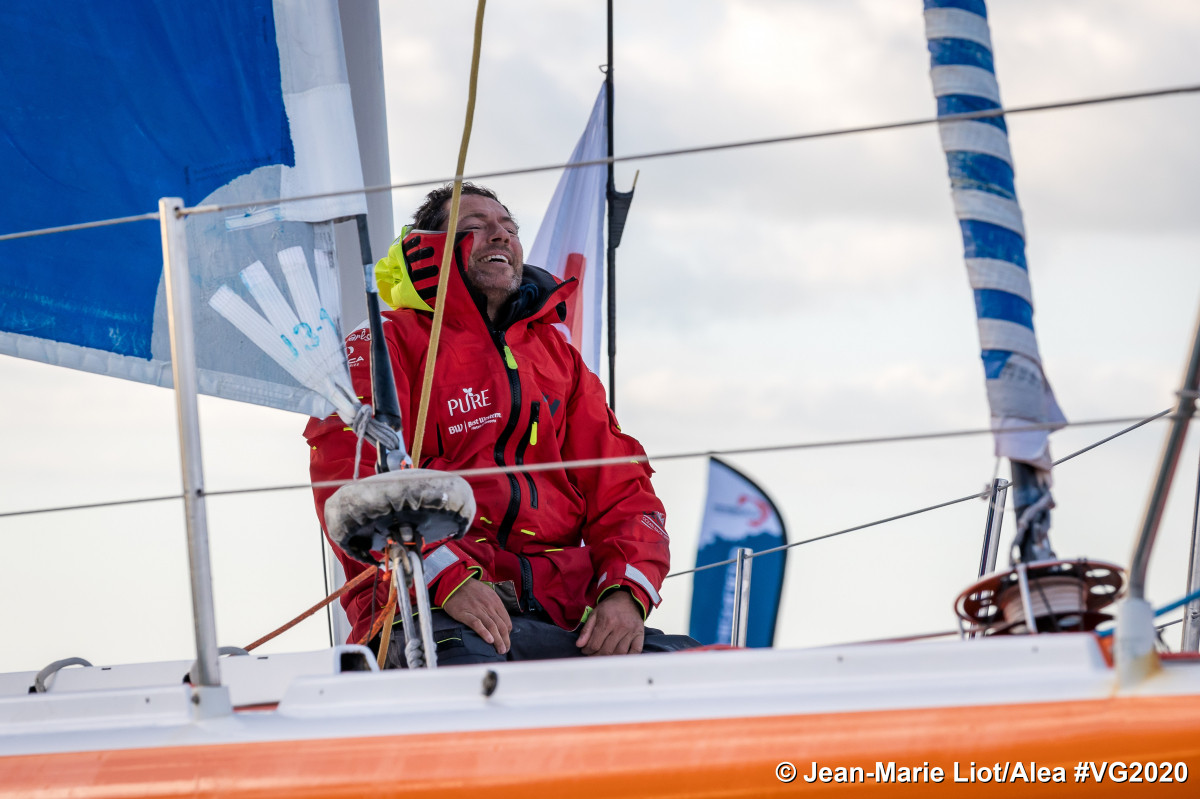
In 2016 his boat was the former La Pingouin, the Lombard design which Alexia Barrier is racing this time.
Before this race Attanasio explained, "A Vendée Globe is 80% hard work and 20% madness". It is to this formula that you have to run your race. Attanasio has lived this race according to these beliefs, always reminding the audience: "I chose to be here. It's intense, it's difficult but I am here doing it."
"My objective? To finish first. And if possible in the first half, before 15th place, that would be good"declared Attanasion pre-start. So today it is mission accomplished with 14th place, aboard a 13 year old boat, the Farr design which started life in New Zealand at the Gitana Eighty of Loïck Peyron. In 2012 it was the fifth placed mount of Jean le Cam and then as Newrest-Matmut went round in 103 days last edition for Fabrice Amedeo who finished in 11th place.
The first week or ten days rather dampened his hopes of that top 10 as a succession of small problems saw him lose touch with the main peloton.
On November 14th, therefore, shortly after rounding the tropical depression Theta, the skipper of Pure - Best Western had problems with his pilots. At the same time a J2 hook (a point of attachment of the headsail, probably the most used on this round-the-world race) and a broken halyard compromised his passage south. And then the mainsail head car gives him problems. Attanasion can no longer reef his mainsail. On November 18th he repairs a process which takes him 11 long hard hours, including a masthead climb which half-traumatises him. He loses three places and many miles.
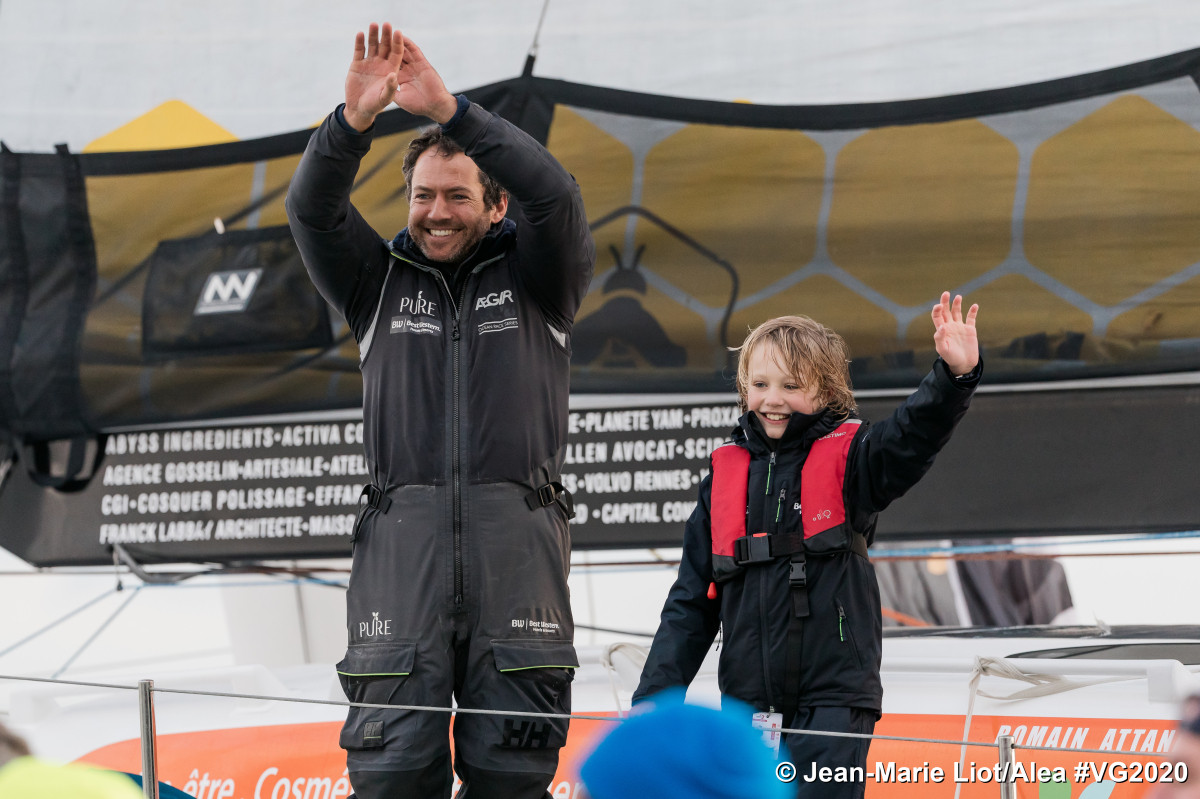
He spends many days racing closely alongside Clarisse Cremer in the south before they are joined by Armel Tripon. Slowed down after rounding Cape Horn, as he passed through the Strait of Le Maire, Attanasio then found himself alone again for the climb back up the South Atlantic before finally being caught by Jérémie Beyou who he sails with until the finish line.
The skipper of PURE - Best Western shares his race with an enthusiastic infectious good humour and spontaneity. Like that of his climb to the mast, the video of his visit to his "hotel room" or his Christmas, among others are highlights of the Vendée Globe. Skipper, actor, commentator he visibly enjoys being at sea. He even manages to be reassuring when, on January 13th in a depression, he falls on a winch, breaks at least one rib and faints. "Nothing serious, it happens to me a lot! "His injury didn't prevent him from holding with Charal for the last few hundred of miles. His finish today Saturday is a well deserved 14th place.
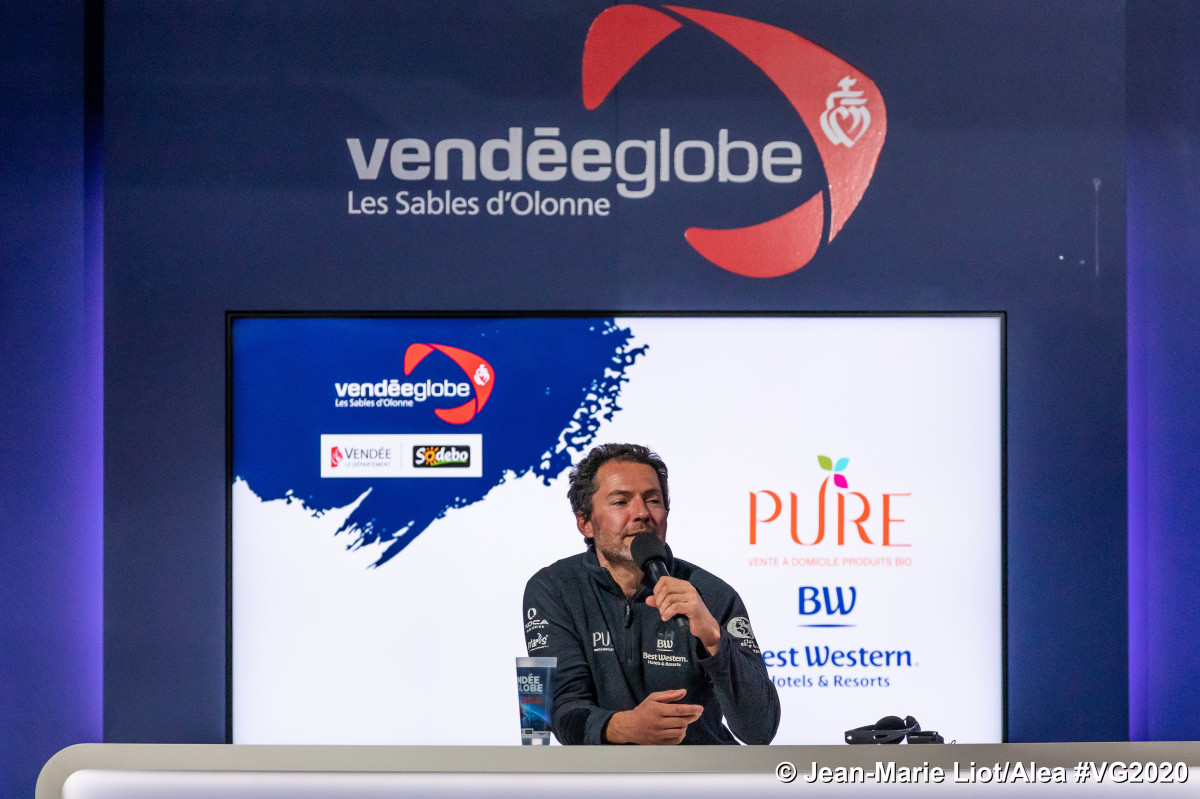
His press conference
Relaxed, happy, contented and relieved of stress, Romain Attanasio was forthcoming and informative, talking of his desire to have a foiling boat for his third Vendee Globe
What has changed compared to your previous race?
"I bought a lot more data because the prices have dropped dramatically. Four years ago I was just taking my weather files from the internet and doing some communication with the organisation and mysponsors. I remember that last time I just went online to see the picture of Thomas Ruyant’s broken boat, but that was the only thing. On this edition we were chatting on whatsapp with my mates, and then I was going on the internet to watch the news a bit. We were a bit isolated. But hey, I still spent 3 months on my own. In the end, we talk more among the skippers at sea than with people ashore because with the land there is still a big gap. I talked a lot with Jérémie in recent days, because we were going through the same thing.
I uploaded more videos, it was much easier, I did it directly with my iphone. I would do a little editing right on my phone and send it over wifi to the organisation. Four years ago I had a video camera I had to remove the memory card compress the files, and the transfer took three hours!"
Mast climb
"There are quite a few skippers to do the Mer et Montagne trophy. An Olivette is used to climb up a pylon. I used it to go up the mast because my mainsail was blocked. But it was two damaged over two metres, it wasn't the same thing at all, it was horrible. I was terrible coming back down. I tried to convey everything: sometimes we laugh, but not always. I had to go up a second time and after that I still ended up with a reef in my mainsail. Four years ago I repaired my rudder near South Africa."
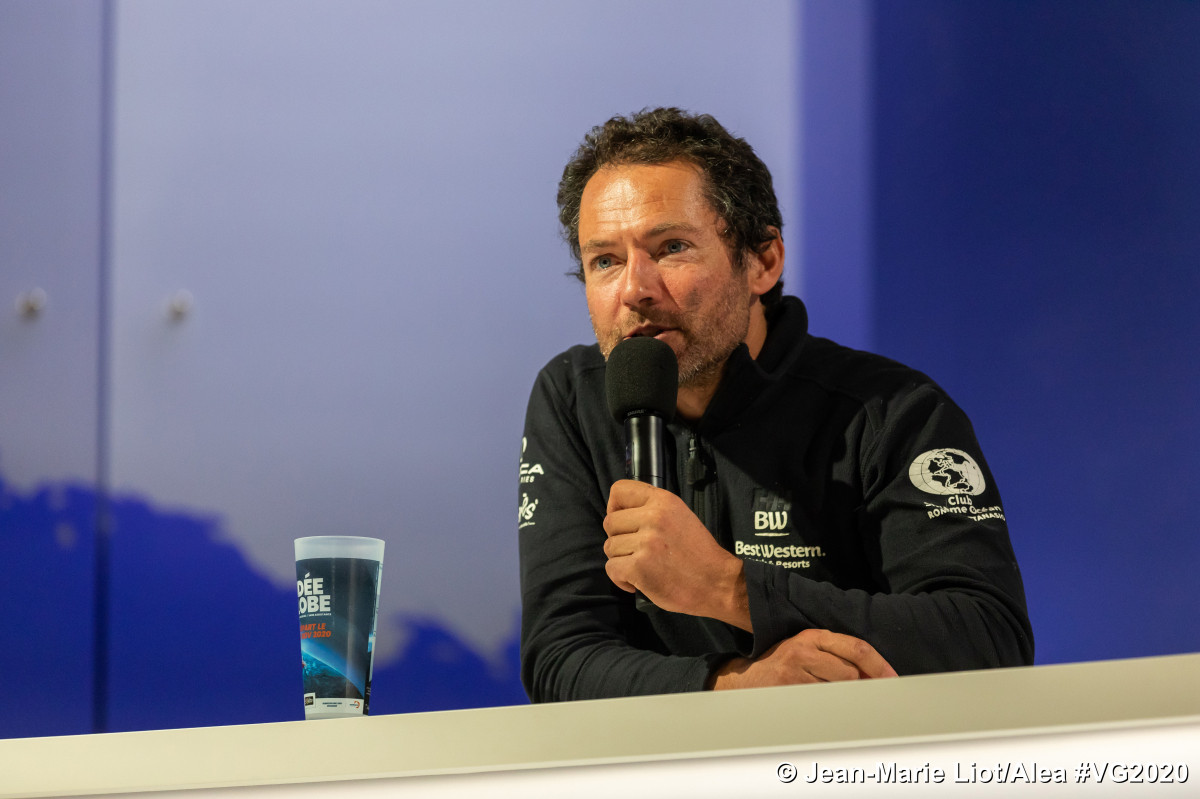
Compressions in the fleet
"No one thought the competition would be so close towards the finish. Usually it always starts from the front. This time at the front the boats always came back from behind. For Yannick (Bestaven) it must have been hellish. It created this group that was always able to keep in touch. Unfortunately I stalled, my mainsail problem didn't help me. It looked very intense, it must have been great for them to experience because it was a real race but it must have been really exhausting because a Vendée Globe is long. And the end was really, really intense.
Personally I kind of thought it took away from the finish of the first skipper as they are usually far ahead. That felt more like a hard race than an incredible adventure around the world."
Sponsors
"I have already spoken with my sponsors for the next stages. My partners are SMEs, it is because there are many of them that they succeed in doing the Vendée Globe. Each business could not do it alone. Everyone of them is important and of course I thank them. For the future I would like to have a foiling boat, I am not asking for a new boat. Foiling boats are the things of my dreams at the moment. They are fabulous.If other sponsors want to join us, so much the better. The hardest part in a Vendée Globe is being at the start, I have lots of fellow sailors who dream of competing in this race, but it's hard to put it all in place. I can see how lucky I am. In difficult times, I think of all the people and companies behind me."
About the evolution of technical rules
"I am a big proponent of cost containment. I've never been on or have had a big team. With foils which are too large foils, we have realized that it was complicated in the deep south. I think we need to establish some rules with the IMOCA class to limit the size of the foils. The main thing is to keep it affordable. You cannot go racing on a boat when you are scared of the boat’s handling or performance. Currently, we are still in a trial period. You cannot use a foiler everywhere like you do on the bay of Port-La-Forêt. It is important that there are always several ways for a sponsor to get involved and that those on a smaller budget can continue to buy older boats."
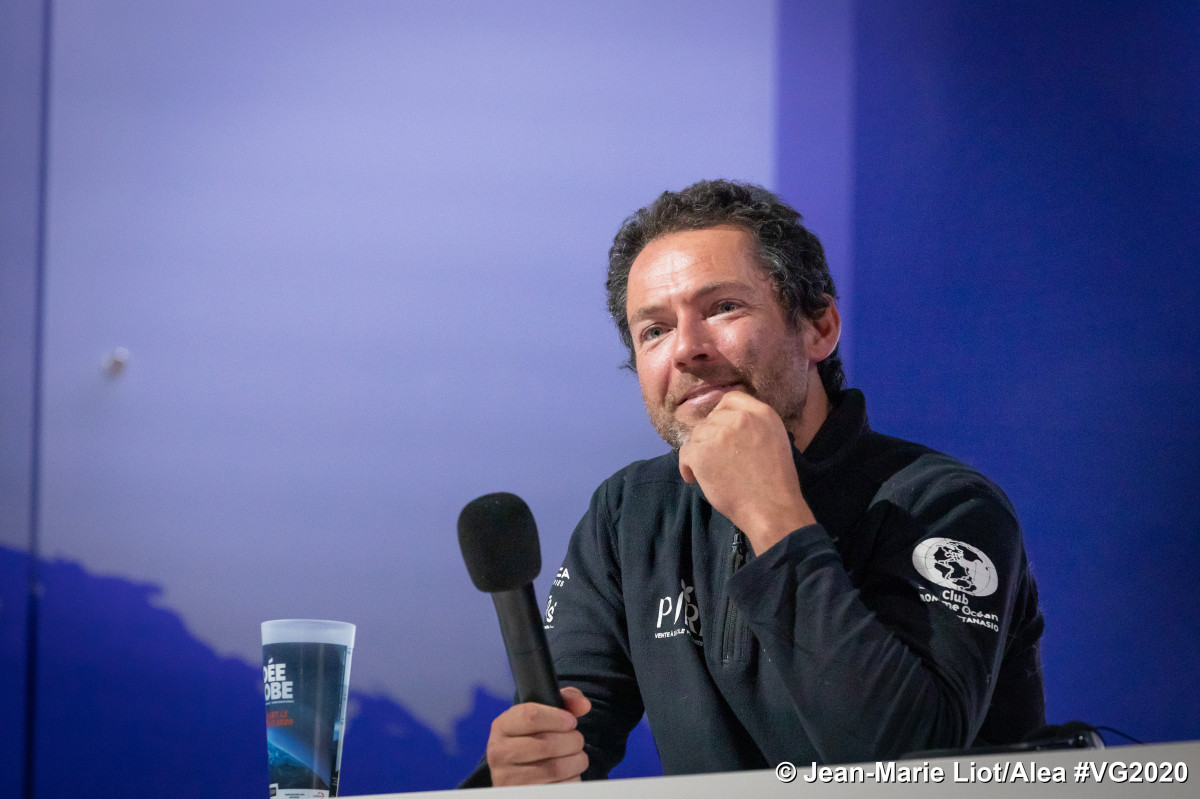
Telling a Vendée Globe story with humour
"I tried to tell my stories with humour. Telling what I was going through with humour helps you reduce some of the stress you feel in difficult situations. I wanted to tell the story of a skipper at sea, someone who is doing something extraordinary but normalise it a bit. I have told about the good times and the bad. The worst was off South Africa when three boats hit the Ofnis. I was at the bottom of my boat at 18 knots, in the dark. There, I knew that if I hit something, I would explode my head against the wall. And those moments, I filmed them too."
A story of self-sacrifice
"I have one quality among my many flaws: when I want something, I don't give up. When I have I decided to go sailing I was dedicated. I was lucky to meet the right people, like the bank manager I went to see when I was 17 when I wanted to do the Mini-Transat. I could have been kicked out of banking. And it was a little bit thanks to him that I got into sailing.
My idea is also to show everyone and the children who follow the Vendée Globe that when you want to do something, you have to go for it and to do it properly, thoroughly. We can do whatever we want if we give ourselves the chances. It's kind of my life lesson as an ocean racer. "
The stats of Romain Attanasio
He covered the 24 365.74 miles of the theoretical course at an average speed of 11.27 knots.
Distance actually travelled on the water: 27 596.98 miles at 12.76 knots of average speed
The great passages
Ecuador (outward)
16th on 20/11/20 at 11h35 UTC, 5 days 12 min after the leader, 1d 22h 14min after the leader
Cape of Good Hope
14th on 03/12/20 at 16h38 UTC, 2 days 17h 27min after the leader
Cape Leeuwin
13th on 16/12/20 at 20h27 UTC, 3 days 09h 01min after the leader
Cape Horn
14th on 07/01/21 at 05h45 UTC, 4 days 16h 02min behind the leader ;
Ecuador (return)
13th on 23/01/21 at 02h03 UTC, 6 days 06h 51min after the leader
His boat
Architect: Farr Yacht Design
Job-site : Southern Ocean Marine (New Zealand)
Launch: March 2007
Former names: Gitana Eighty, Synerciel, Newrest-Matmut
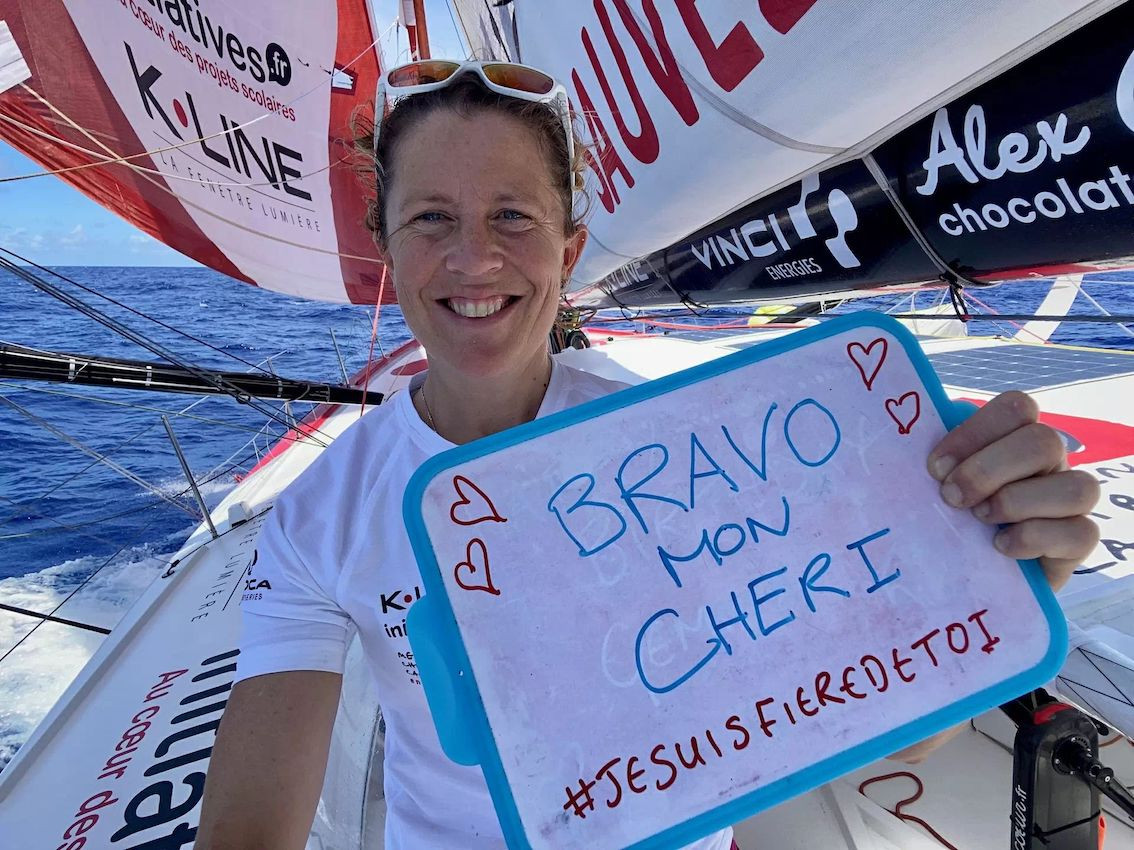
Teams info
Claire Vayer: Momentum on solution-finding by MMAG is building
Awareness and progress towards finding solutions to the problem of boats hitting marine mammals at sea is growing, according to Claire Vayer, Sustainability Manager at IMOCA.
•••Lunven and Soudée on the dockside in Lorient: preparing for a classic north Atlantic passage
Once again La Base marina in Lorient, Brittany – the main home of the IMOCA fleet – is a hive of activity as 33 boats and their skippers prepare for the daunting challenge of the North Atlantic alone.
•••